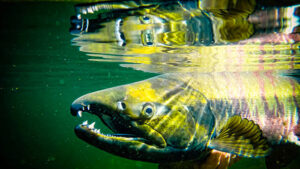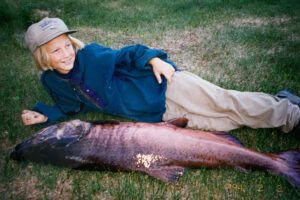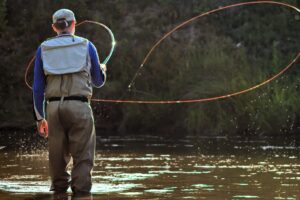Introduction to the Talachulitna River
The Talachulitna River, affectionately known as “The Tal,” is a pristine waterway located in south-central Alaska2. This 45-mile long river begins at the scenic Judd Lake and flows through breathtaking landscapes before joining the Skwentna River7. Known for its crystal-clear waters and abundant fish populations, the Talachulitna River has become a mecca for anglers seeking the ultimate Alaskan fishing experience
| Talachulitna River | |
| Activities | Popular for fly-in rafting and fishing trips |
| Length | 45 mi (72 km) |
| Location | Alaska, United States |
| Mouth | Skwentna River |
| Source | Beluga Mountain |
Alaska’s Hidden Gem
The geographical isolation of the Talachulitna River adds to its allure, offering anglers a rare opportunity to fish in a setting that remains largely unaffected by human activity. The river’s diverse habitats support a vibrant aquatic ecosystem, making it a haven for salmon, rainbow trout, and grayling, among others. These factors collectively contribute to the river’s reputation as a premier fishing destination in Alaska.
Access to Fishing the Tal
Accessing the Talachulitna River typically involves a combination of air and water travel, adding an element of adventure to the journey. Anglers often begin their trip with a flight to Anchorage, followed by a chartered floatplane or boat ride to reach the river. This remote access ensures a level of solitude and serenity that is increasingly rare in today’s world.
Wildlife Sightings
- Exploring the Talachulitna River by boat provides the opportunity to encounter wildlife, such as bears and moose, up close.
- Seeing bears and moose crossing the river from the boat is a different and more immersive experience compared to viewing them from the air.
- Visitors are advised to have their cameras ready to capture the wildlife sightings.
Historical Significance
- The Talachulitna River has a rich history, with fishermen catching and releasing “leopard-spotted” rainbow trout since the early 1970s.
- The river has evolved from its historical lineage, and the only “blood shed” now is from the fish or the occasional bear.
- The community around the Talachulitna River is tight-knit, with the few neighbors being lifelong friends.
Camping and Lodgings On The Talachulitna
Enhancing the overall angling experience is the Tal-Adventures Lodge, strategically located along the river. The lodge offers a blend of comfort and convenience, providing anglers with well-appointed accommodations, dining facilities, and guided fishing services. The knowledgeable guides at Tal-Adventures Lodge possess an intimate understanding of the river’s intricacies, ensuring that anglers make the most of their time on the water. Whether you are a seasoned angler or a novice, the lodge’s amenities and expert guidance can significantly enhance your fishing experience on the Talachulitna River.
Fishing Opportunities in the Talachulitna River
Salmon Species
There are five species of Pacific salmon, and all of them migrate annually to the Talachulitna River. The first to arrive in mid-June is the mighty Chinook (or King) Salmon. This big fish is generally taken on a large spinning tackle. However, many fly fishers have experienced the ultimate in angling adventure when a King has taken their weighted streamer fly. The Sockeye (or Red) Salmon begins arriving the last week of July. By the first two weeks of August, you can stand knee-deep in the river surrounded by these swift, brilliant fighters! The last week of July throughout August, the Tal is home again to the Chum and Pink Salmon. The Chum is a large, powerful fish and provides a thrilling contest. You will marvel at the sheer number of Pink Salmon which inhabit the Tal. The entire month of August finds the Coho (or Silver) Salmon entering the Tal. They are fresh, strong, and of perfect eating quality.
Each species of salmon presents its own unique set of challenges and rewards, contributing to the rich tapestry of fishing experiences on the Talachulitna River. Whether you are drawn to the power of the Chinook or the agility of the Coho, the river offers an exceptional adventure for every angler.





Arctic Grayling
As August rolls in, the focus shifts towards Arctic grayling. These fish are particularly abundant in the Talachulitna River during late summer and early fall. Anglers can anticipate catching grayling within the 14 to 18-inch range. Known for their willingness to strike various flies and lures, Arctic grayling provide an engaging and rewarding fishing experience. Their presence is a testament to the river’s rich biodiversity and healthy ecosystem.
Dolly Varden: A Fascinating Char Species
Dolly Varden (Salvelinus malma) is a species of char native to cold-water tributaries of the Pacific Ocean in Asia and North America. This beautiful fish is closely related to Arctic char and bull trout, belonging to the genus Salvelinus.

| Dolly Varden trout Species of salmonid fish | |
| First Described | Originally named by Johann Julius Walbaum in 1792 |
| Native Habitat | Cold-water tributaries of the Pacific Ocean |
| Scientific Name | Salvelinus malma |
| Subspecies | Northern Dolly Varden and Southern Dolly Varden |
| Taxonomy | Part of the Salvelinus alpinus complex |
Range and Habitat
Dolly Varden are found along the west coast of North America, from Puget Sound northward along the British Columbia coast to the Alaska Peninsula. Their range extends westward through the Aleutian Islands and across the Bering Sea to Japan. These fish typically inhabit cool, freshwater environments but may also migrate into various saltwater habitats.
Physical Characteristics
Dolly Varden have a trout-like body with a slightly oblique mouth, forked tail fin, and small scales10. They are known for their striking coloration, particularly during spawning season. Males display brilliant pink, green, and orange hues, making them one of the most visually appealing trophies of the north.
Life Cycle and Behavior
Dolly Varden exhibit complex migratory patterns. Some populations are anadromous, meaning they migrate between freshwater and the ocean, while others remain in freshwater their entire lives6. They typically spawn in the fall, with fish returning to their natal streams upon reaching maturity at age 5 to 96.
Size and Growth
These fish can grow quite large, with some specimens reaching up to 27 pounds and 24 inches in length9. However, most Dolly Varden caught by anglers are between 15 and 22 inches long.
Fishing for Dolly Varden
Dolly Varden are prized by fly fishermen for their aggression, size, and remarkable colors6. The best fishing for Dolly Varden typically occurs during the months of June, July, and August11. Anglers often target them using small streamer patterns, egg patterns, or swung flies like the Egg-Sucking Leech.



Rainbow Trout
The Talachulitna River offers exceptional opportunities for anglers targeting rainbow trout and Arctic grayling. During the late July spawning period of King salmon, the river transforms into an angler’s paradise. The spawning activity stirs up nutrients in the water, creating an abundant food source that attracts large rainbow trout. This period coincides with ideal weather conditions, making it a prime time for fly fishing enthusiasts to experience some of the most memorable catches. Anglers can expect to find rainbow trout ranging from 22 to 26 inches, characterized by their distinctive crimson markings and black spots, aggressively feeding on the nutrient-rich offerings.
Best Time to Trout Fish
September marks another fruitful period for rainbow trout fishing. As the water temperatures begin to drop, larger rainbow trout become more active. These fish, often exceeding 26 inches, continue to feed voraciously in preparation for the colder months ahead. The vibrant hues and distinctive patterns of these trout make them a prized catch for any angler venturing to the Talachulitna River.
Whether you’re drawn by the prospect of catching the crimson-marked rainbow trout or the abundant Arctic grayling, the Talachulitna River offers a diverse and dynamic fishing experience. The interplay of seasonal changes, abundant food sources, and ideal weather conditions ensures that anglers have every opportunity to make the most of their fishing expedition.
Tips and Recommendations for a Successful Fishing Trip
Planning a fishing trip to the Talachulitna River requires careful consideration of several factors to ensure a rewarding experience. One of the most crucial aspects to keep in mind is the timing of your visit. The best times to fish vary depending on the species you’re targeting. For instance, king salmon runs typically peak in late June, while silver salmon are more abundant from mid-August to early September. Trout fishing, on the other hand, is excellent throughout the summer months, particularly in July and August.
Techniques for Fishing the Talachulitna
Techniques for successful fishing on the Talachulitna River include drift fishing and fly fishing. Drift fishing with bait or lures can cover large areas of water, making it easier to locate fish. Fly fishing, particularly for trout, can be highly productive in the river’s clear waters. Local guides at Tal-Adventures Lodge can provide invaluable insights into the most effective techniques and locations for fishing.
Gear
When it comes to gear and tackle, preparation is key. For salmon fishing, medium to heavy action rods with a strong reel are advisable, along with 20-30 lb test lines. Lures such as spinners, spoons, and plugs are highly effective. For trout, lighter gear is preferable, with 6-10 lb test lines and an assortment of flies, spinners, and small crankbaits. Don’t forget to bring waders and polarized sunglasses to enhance your fishing experience by allowing you to spot fish more easily.
Remote Lodge or Camping
Staying at Tal-Adventures Lodge offers numerous benefits, including comfortable accommodations, expert-guided fishing services, and all the necessary amenities to make your trip enjoyable. Their knowledgeable staff can assist with everything from gear selection to navigating the river’s best fishing spots.
Best Practices
Respecting the natural environment is paramount. It’s essential to adhere to local fishing regulations, including catch limits and seasonal restrictions, to help preserve the Talachulitna River’s pristine condition. Practicing catch and release for certain species can also contribute to the sustainability of the fishery.
Fishing on the Talachulitna River is truly a dream come true for anglers worldwide. The combination of stunning natural beauty, diverse fish species, and exceptional fishing opportunities makes it a premier destination for any fishing enthusiast.











